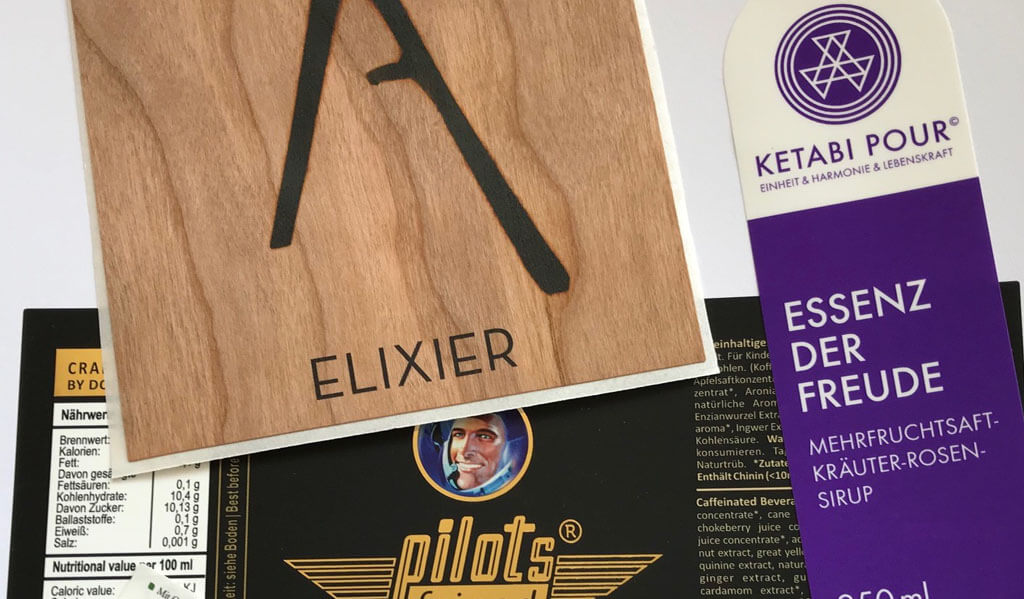Labels, labelling and printing on packaging
Our service to you.
Plastic bottles, jars and other packaging for cosmetics and foodstuffs don’t just protect their contents. They also have to inform the consumer about the contents and its properties and use (product labelling obligation).
There are two main methods of placing this information on the packaging: either direct printing on the packaging or the label. Sleeves (printed shrink sleeves that are placed over the entire packaging) are also becoming increasingly popular.
Have your packaging printed
For direct printing, the decisive factor is whether the packaging can be printed flat (e.g. cardboard, Tetra Pak, etc.) or in a round or square shape. Especially for flat printability and large quantities, printing on packaging is usually the preferred option as it is very affordable.
The wide variety of printing and finishing techniques also means that there are virtually no limits to creativity when it comes to flat printing. The options for labels on round or square packaging, on the other hand, are much more limited. Only screen printing and pad printing are actually available for small quantities. However, both print variants offer only a low resolution and allow only limited gradients. In most cases, depending on the packaging and machine equipment, only between one and four colours can be used.
Labels: printing and labelling
The label offers considerably more possibilities here. Since labels are printed flat, all printing and finishing options are available here. A wide range of techniques is available for printing labels, including digital printing.
Labels can also be produced relatively cheaply with gold or silver hot stamping or spot varnishing. The standard labels offered by Packari.com are printed on plastic material. They are overlaminated with a glossy, matt or soft-touch plastic film. This makes the label absolutely waterproof and protects it against scratches as well as many solvents.
Multi-Layer-Etikett
Very detailed product information or warnings in several languages are no problem for our labels. The so-called multi-layer label was developed for this purpose. This label can be opened like a book. It’s possible to have up to five pages here. A special adhesive makes it possible to open the individual pages several times.
Materials for label printing
Aside from the standard plastic label, a variety of materials are available for label printing. In addition to real wood (veneer), these include various types of paper as well as foils made from bio-plastics. For example, beverage bottles made of organic plastics can also be labelled with labels made of organic plastics.
Labelling
A labelling machine is required in order to attach labels to the packaging. Different machines are used here for different packaging shapes (round, square) or different packaging parts (base, lid, bottle body). Packari.com offers contract labelling for many round, cylindrical and conical packages. Unfortunately, we don’t offer labelling of the lid and base.
Sleeve-Etikett: yes or no?
We advise using sleeves when larger quantities are involved. Using sleeve labels is also advantageous if an additional benefit, such as the tamper-evident guarantee, is covered or if a special bottle shape can be created. For this reason, the sleeve is usually applied directly by the contract filler after filling. For quantities of up to approx. 50,000 units per print image, a sleeve is usually more expensive than a label.
Packari offers comprehensive services in all three areas – package printing, label printing and labelling.
Get in touch with you queries!

